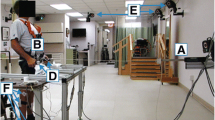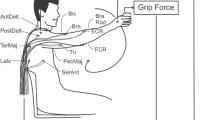Abstract.
For individuals with paraplegia, standing up requires activation of paralyzed leg muscles by an artificial functional electrical stimulation (FES) controller and voluntary control of arm forces by the individual. Any knowledge of such voluntary control, particularly its prediction, could be used to design more effective FES controllers. Therefore, artificial neural network models were developed to predict voluntary arm forces from measured angular positions of the ankle, knee, and hip joints during FES-assisted standing up in paraplegia. The training data were collected from eight paraplegic subjects in repeated standing-up trials, and divided into two categories for training and validation. The predictions of the models closely followed both the training and validation data, showing good accuracy and generalization. The comparison of the models showed that, although there are striking similarities among the voluntary controls adopted by different subjects, each subject develops his/her own `personal strategy' to control the arm forces, which is consistent from trial to trial. The level of consistency was dependent on the experience in using FES, injury level, body weight, and other subject-specific parameters.
Similar content being viewed by others
Author information
Authors and Affiliations
Additional information
Received: 5 January 1999 / Accepted in revised form: 29 January 2001
Rights and permissions
About this article
Cite this article
Davoodi, R., Kamnik, R., Andrews, B. et al. Predicting the voluntary arm forces in FES-assisted standing up using neural networks. Biol Cybern 85, 133–143 (2001). https://doi.org/10.1007/PL00008000
Issue Date:
DOI: https://doi.org/10.1007/PL00008000




